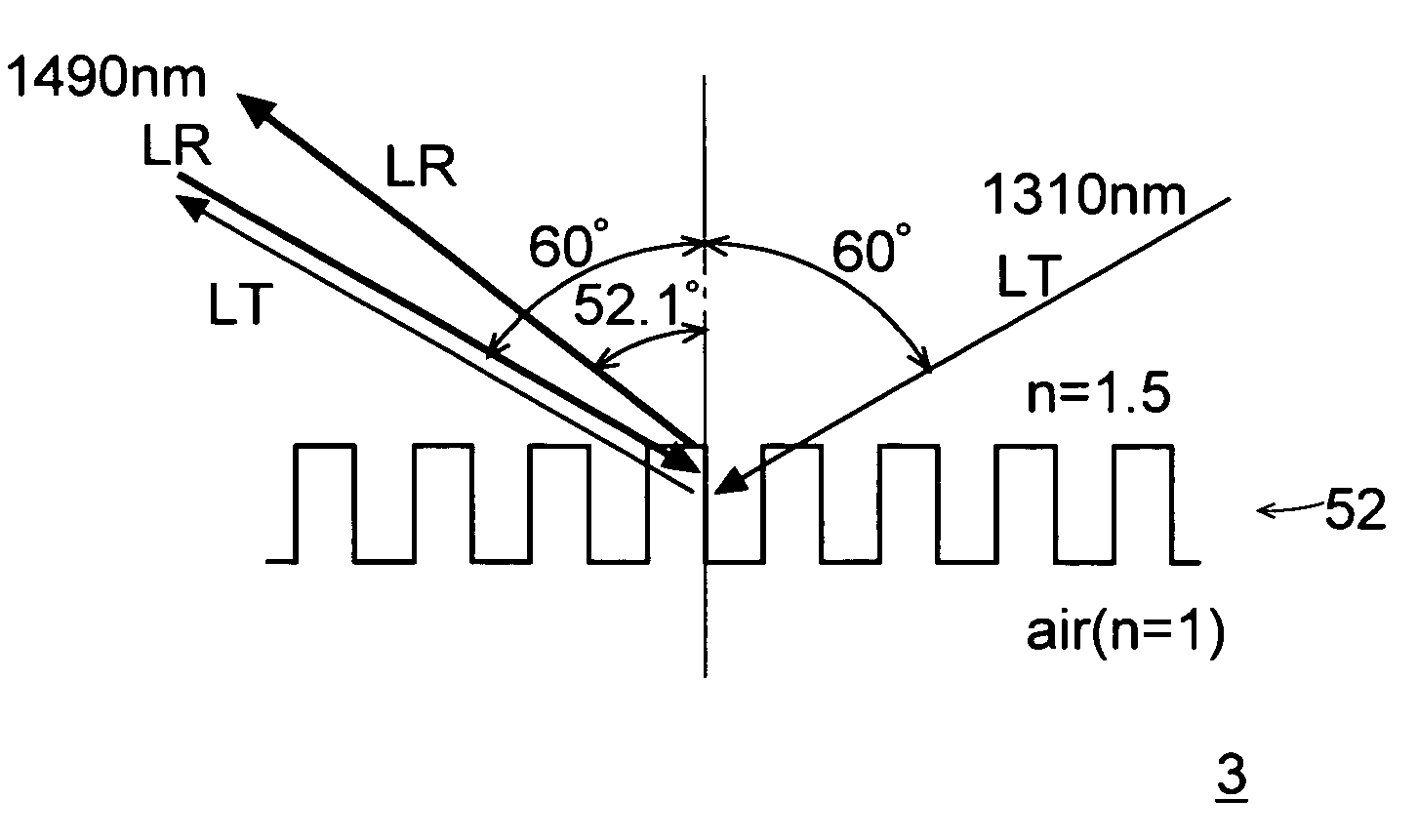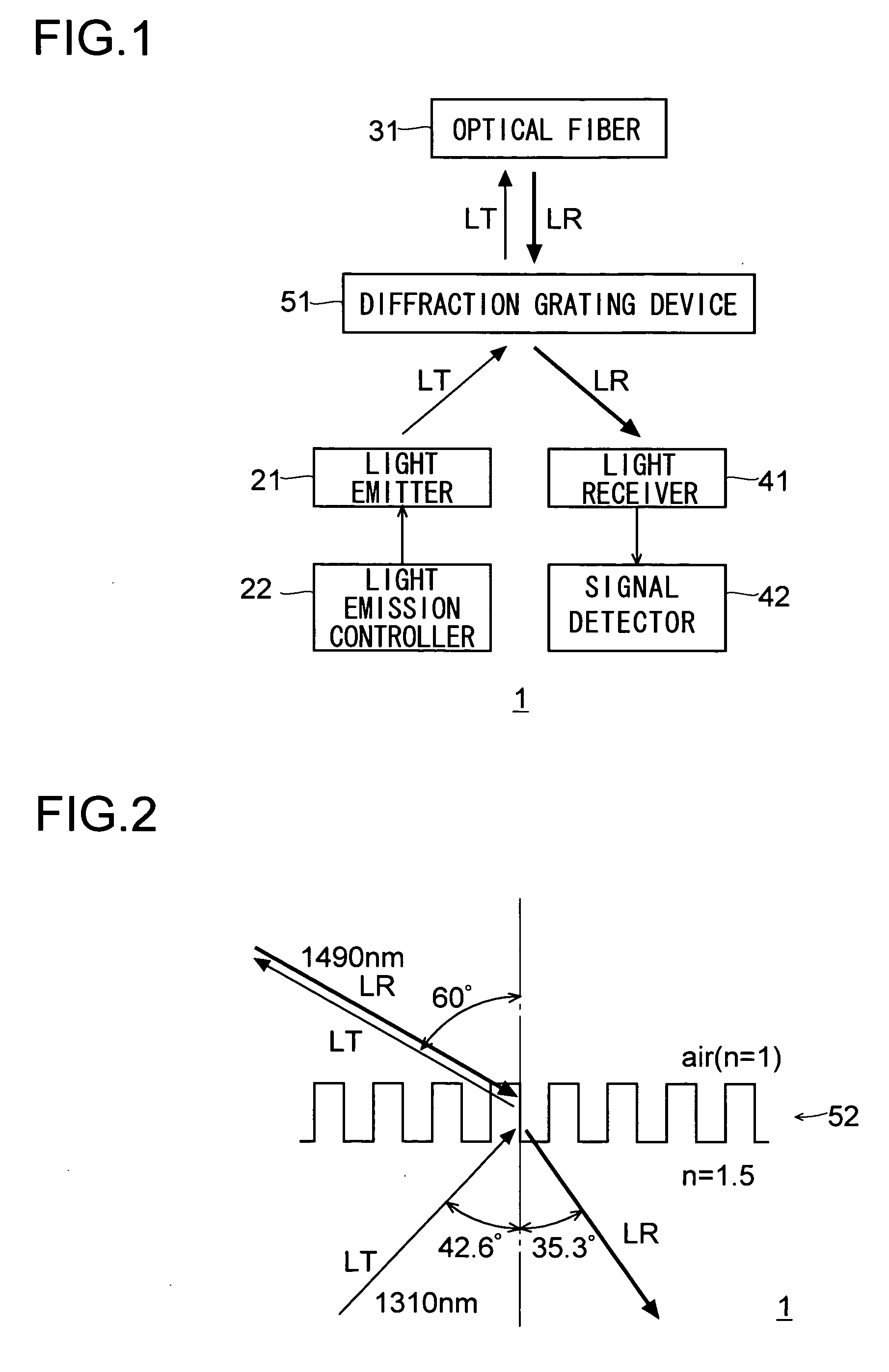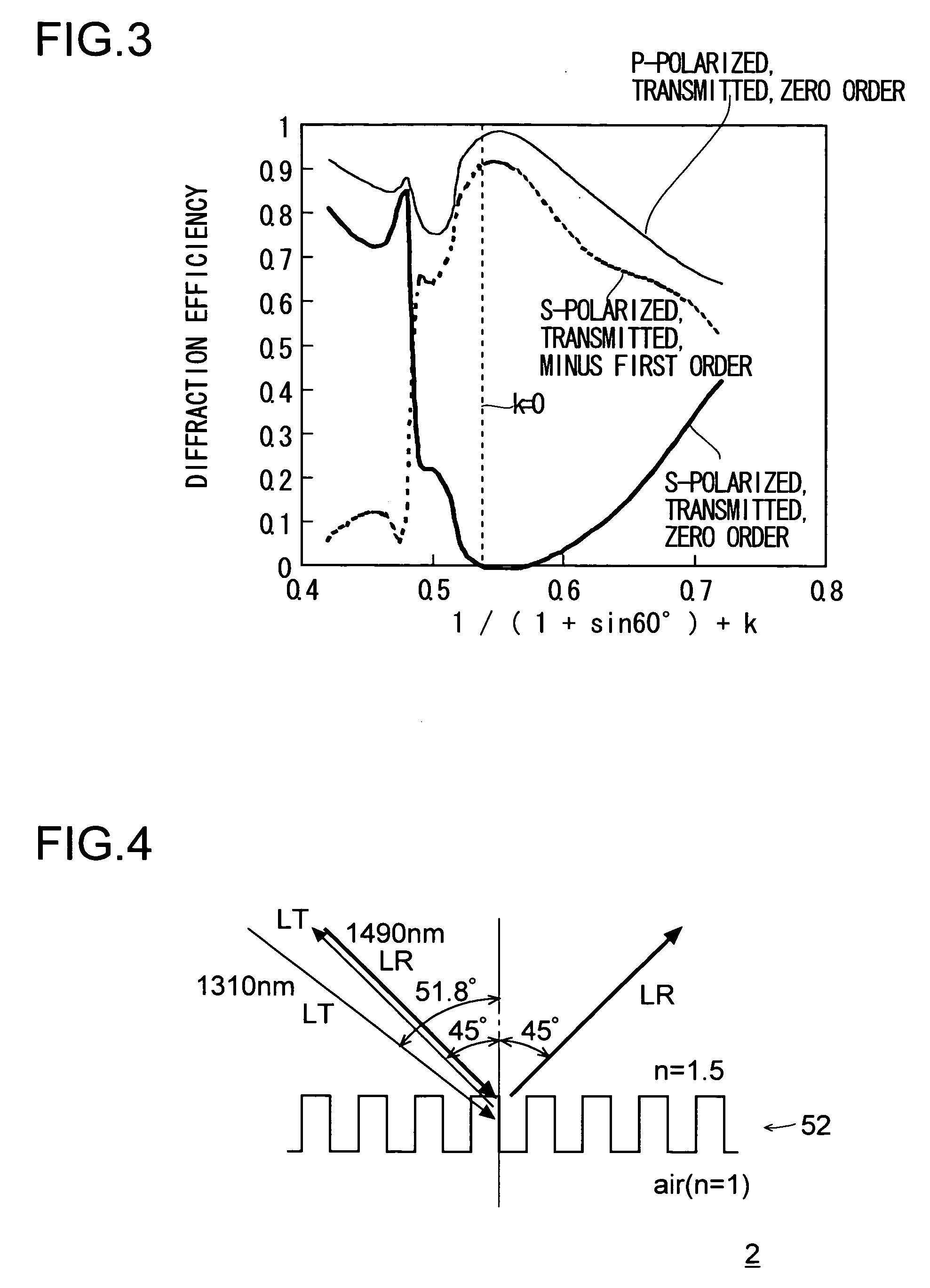Diffraction grating device and optical apparatus
a technology of grating device and optical apparatus, which is applied in the direction of optical instruments, wavelength-division multiplex systems, instruments, etc., can solve the problems of inevitably divergence of diffracted light beams, complex and time-consuming process for the production of such films, and high cost, so as to achieve easy reduction of light beam divergence, high diffraction efficiency, and high diffraction efficiency
- Summary
- Abstract
- Description
- Claims
- Application Information
AI Technical Summary
Benefits of technology
Problems solved by technology
Method used
Image
Examples
first embodiment
[0121]FIG. 1 schematically shows the construction of the optical apparatus 1 of a first embodiment of the invention. The optical apparatus 1 is a transmitter / receiver apparatus for use in optical communication, and includes a light emitter 21, a light emission controller 22, an optical fiber 31, a light receiver 41, a signal detector 42, and a diffraction grating device 51.
[0122]The light emitter 21 emits a light beam LT to be transmitted. The light emission controller 22 controls the light emission by the light emitter 21 so as to make the light beam LT emitted by the light emitter 21 carry a signal to be transmitted. The light emitter 21 includes, though not illustrated, a laser diode and a condenser lens so as to emit a parallel light beam obtained by condensing with the condenser lens the light emitted by the laser diode.
[0123]The optical fiber 31 transmits to the outside the light beam LT, carrying the signal to be transmitted, from the light emitter 21. The optical fiber 31 al...
second embodiment
[0134]The optical apparatus 2 of this embodiment, too, is for use in optical communication, and has a construction similar to that of the optical apparatus 1 shown in FIG. 1. Specifically, the optical apparatus 2 includes a light emitter 21, a light emission controller 22, an optical fiber 31, a light receiver 41, a signal detector 42, and a diffraction grating device 51.
[0135]Now, the design of the diffraction grating 52 formed on the diffraction grating device 51 in the optical apparatus 2 will be described. Here, as in the first embodiment, it is assumed that the period of the elevations and depressions of the diffraction grating 52 is Λ; that the height difference between the elevations and depressions of the diffraction grating 52 is h; that, of the two media between which the diffraction grating 52 is sandwiched, the one present on the side thereof on which the light beam LT is incident has a refractive index of n1 and the other has a refractive index of n2; that the incidence...
third embodiment
[0143]The optical apparatus 3 of this embodiment, too, is for use in optical communication, and has a construction similar to that of the optical apparatus 1 shown in FIG. 1. Specifically, the optical apparatus 3 includes a light emitter 21, a light emission controller 22, an optical fiber 31, a light receiver 41, a signal detector 42, and a diffraction grating device 51.
[0144]Now, the design of the diffraction grating 52 formed on the diffraction grating device 51 in the optical apparatus 3 will be described. Here, as in the first embodiment, it is assumed that the period of the elevations and depressions of the diffraction grating 52 is Λ; that the height difference between the elevations and depressions of the diffraction grating 52 is h; that, of the two media between which the diffraction grating 52 is sandwiched, the one present on the side thereof on which the light beam LT is incident has a refractive index of n1 and the other has a refractive index of n2; that the incidence...
PUM
 Login to View More
Login to View More Abstract
Description
Claims
Application Information
 Login to View More
Login to View More - R&D
- Intellectual Property
- Life Sciences
- Materials
- Tech Scout
- Unparalleled Data Quality
- Higher Quality Content
- 60% Fewer Hallucinations
Browse by: Latest US Patents, China's latest patents, Technical Efficacy Thesaurus, Application Domain, Technology Topic, Popular Technical Reports.
© 2025 PatSnap. All rights reserved.Legal|Privacy policy|Modern Slavery Act Transparency Statement|Sitemap|About US| Contact US: help@patsnap.com



